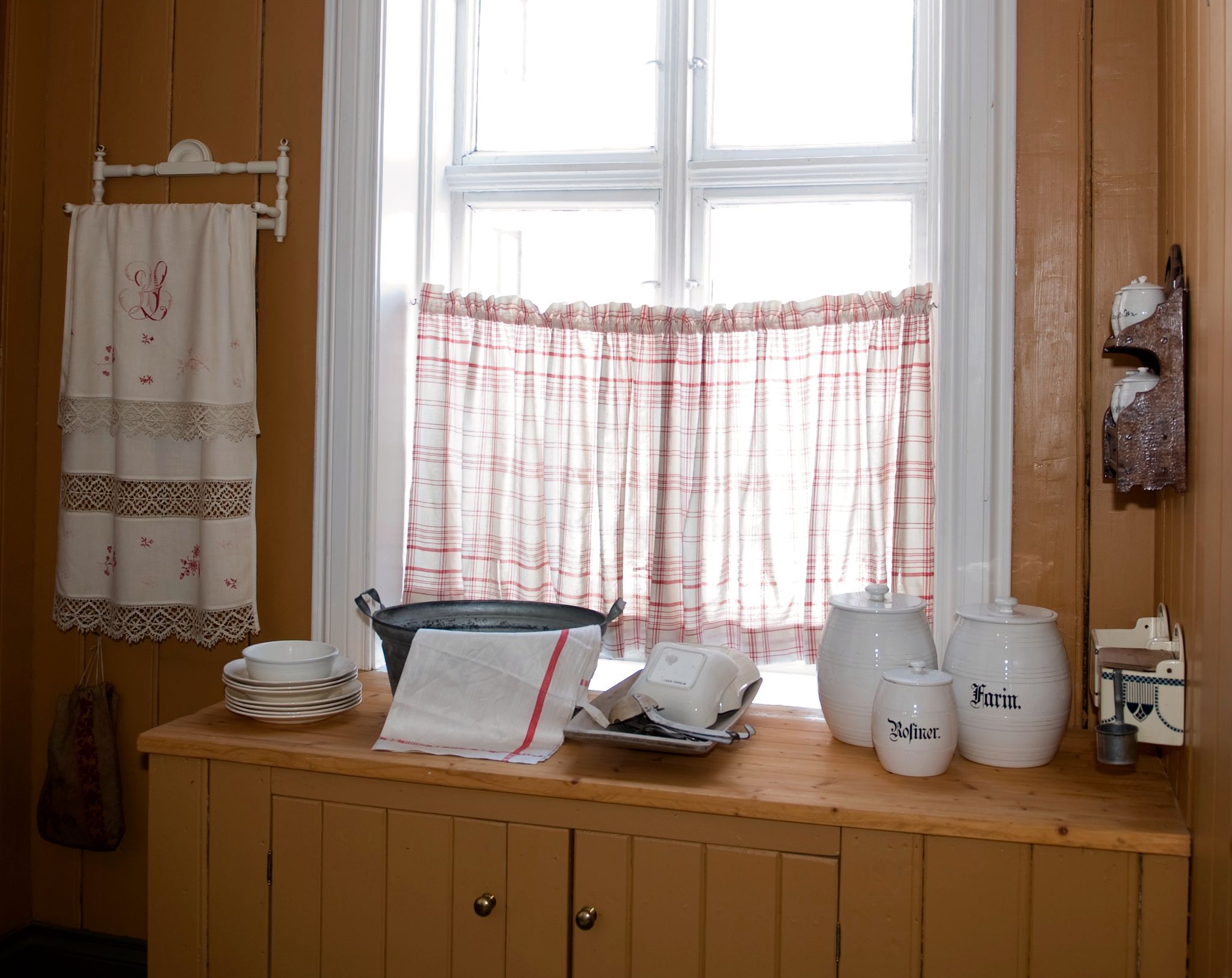
From cooking over an open fire to today’s kitchen with integrated appliances and electronic washing machines. Join a journey through time in the history of the kitchen.
Today we take electric kitchen aids for granted. But the kitchen does not always have all this.
The look of the décor has also changed dramatically, from an open pit and stone floors via colorful linoleum and patterned wallpaper in the 1960s and 1970s to today’s modern kitchen with clean surfaces and functional design.
important temperature
Heat is an essential element in the history of the kitchen, says cultural historian Bert Sandvik at the Norwegian Folk Museum.
it goes without saying. Heat is needed to prepare food, and until the 19th century it was done in open pits. When the wood stove came along in the late 19th century, it changed both dishes and eating habits considerably.
– It was revolutionary. One can control the heat better, it reduces the consumption of wood and provides a better use of energy. Now, for example, you can bake bread, not just flatbread on a rack over an open fire, says Sandvik.
The wood-burning stove was called the “black oven”. It persisted in Norwegian homes until World War II, although gas and electric stoves had been on the market for some time.
The electric stove arrived in Norway in the 1930s. However, it took time before it became popular in Norwegian homes. We see that it has gradually evolved in line with the community and infrastructure, Sandvik says.
Refrigerator entrance
Thus, heat is an important factor in the history of the kitchen, but it is also cold. However, the refrigerator, as we know it, made its way into Norwegian homes after more than 100 years of using the stove.
The ice cabinet, which preceded the refrigerator, kept food cold using ice cubes located at the top of the cabinet. Changed once or twice a week.
Ice was cut from fjords, lakes and artificial ponds. This was a large company in Norway from the 1850s until World War II, with exports to many countries.
The story of the refrigerator as we know it today began in the United States in 1916. But it took nearly ten years before it became affordable and practical enough to become particularly popular.
General Electric was the largest manufacturer, and its Frigidaire model was on sale in Norway in the late 1920s. But it took another 40 years before refrigerators became common in Norwegian homes.
technology revolution
Thus, two of the most important elements of the kitchen are heat and cold. During the 1930s, other electronic aids dominated the kitchen, such as mixers and water heaters.
Norwegian homes and kitchens experienced a technical revolution in the decades leading up to World War II. Installed water and drainage, electric light, gas, and eventually a number of other electrical aids reduced the wear and tear of housework. Sandvik explains that cooking and cleaning has become easier and less time consuming than before.
In parallel with technical development, the aesthetic has also changed. In the 1920s and 1930s, the focus was on the kitchen being hygienic and easy to care for.
Walls were often painted with a glossy, washable paint, while floors could have linoleum paint that is easy to keep clean. At the time, most kitchens were also a compact space.
The mother of the modern kitchen
But it was Austria’s first female architect, Margrethe Schott Lehutsky, who became the mother of modern kitchen. In 1926 she designed Frankfurt Kitchen. It was produced in more than 10,000 units, and therefore it can rightly be called the first mass-produced kitchen.
Frankfurt Kitchen Emphasize efficiency and use of space. Among other things, this kitchen had ironing boards and wall cabinets that went to the ceiling.
The focus was on making the daily life of the housewife easier. A Swedish study in the 1950s showed that an “average housewife” walks a full seven kilometers per day in the kitchen. This resulted in a well-planned kitchen where workflow was in focus.
warm room
But the story of the kitchen’s important place in the home is more than just a story of technology, functionality and efficiency. It is also about social and personal psychology.
The kitchen is the heart of the house. The main reason is the aforementioned element: heat.
In the old days, the kitchen was often the only warm room. It was important to save fuel, and the rest of the house was often cold. But in the kitchen there was a fire in the wood-burning stove and therefore warm and comfortable. This is where the family gathers. The wood stove served as the “hearth of the house” and represented the warmth of the home, in a figurative sense as well. Although today’s home has heating in all rooms, the kitchen has retained its status as a “warm room,” says Sandvik.

“Explorer. Unapologetic entrepreneur. Alcohol fanatic. Certified writer. Wannabe tv evangelist. Twitter fanatic. Student. Web scholar. Travel buff.”



